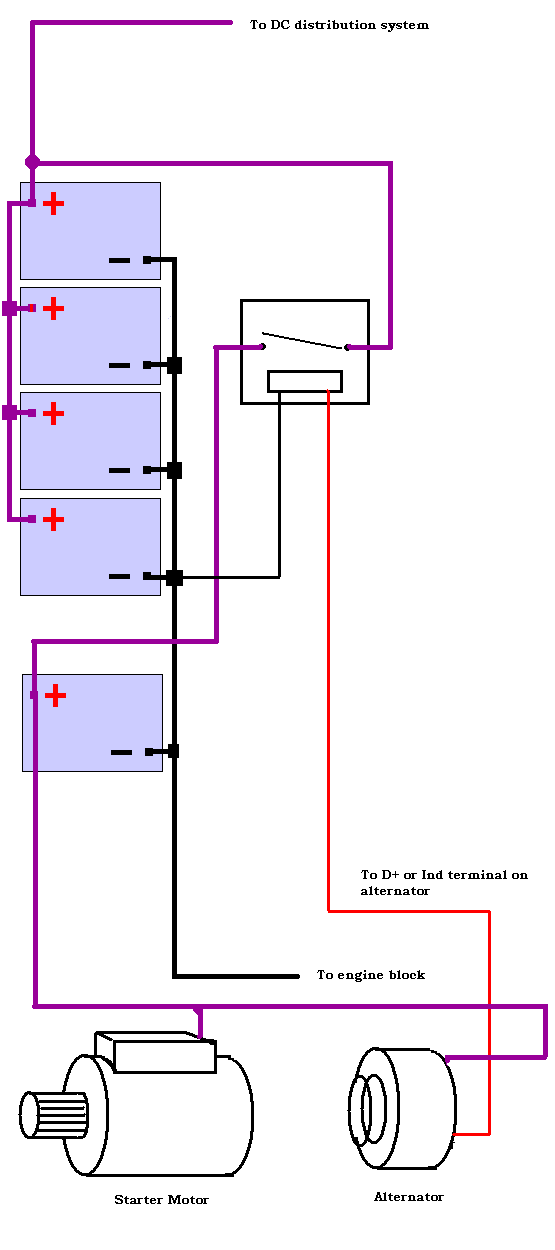Choosing your DC charging and split charging system.
Once people come to accept that this is indeed what happens with split charge diodes (either by calculation or by measuring a system with a voltmeter) they often then completely dismiss the idea out of hand. Me included. So that gets rid of the diode splitter and the alternator controller. No need for them, they don't work.
So we have to look for an alternatve. Here's a good, simple one.

What we've done here is rip it back to the basic system then add a relay that connects the batteries together. This relay is energised by the D+ or Ind terminal on the back of the alternator. This terminal produces 12 volt power when the alternator is charging.
So when the alternator is charging, the batteries are connected together. When it isn't charging the batteries are separated.
Some people attempt to dismiss this idea with various spurious arguments such as the cable burning out or the relay melting. These are just ridiculous arguments. If the cable and relay are sized correctly this cannot happen. Anyone who says it can is either deliberately trying to discredit the idea (perhaps because they sell diodes) or simply don't know what they are talkiing about.
So is this idea perfect?
No, not at all. Very few ideas are perfect. But it is far more perfect than the diode idea. And it can be improved upon with some very simple modifications.....
Firstly look at the output from the alternator. It has to go through the cable to the starter motor, then up to the engine start battery, then on to the split charge relay, through this then on to the domestic bank.
The domestic bank is where the bulk of the current goes, therefore losses on the way to the domestic battery are more important than to the engine battery. The engine battery will draw much lower currents during charging.
Each connection, each extra length of cable will introduce losses. So let's remove as many as possible.....
Page last updated 02/04/2008.
Website best viewed on a computer of some sort.